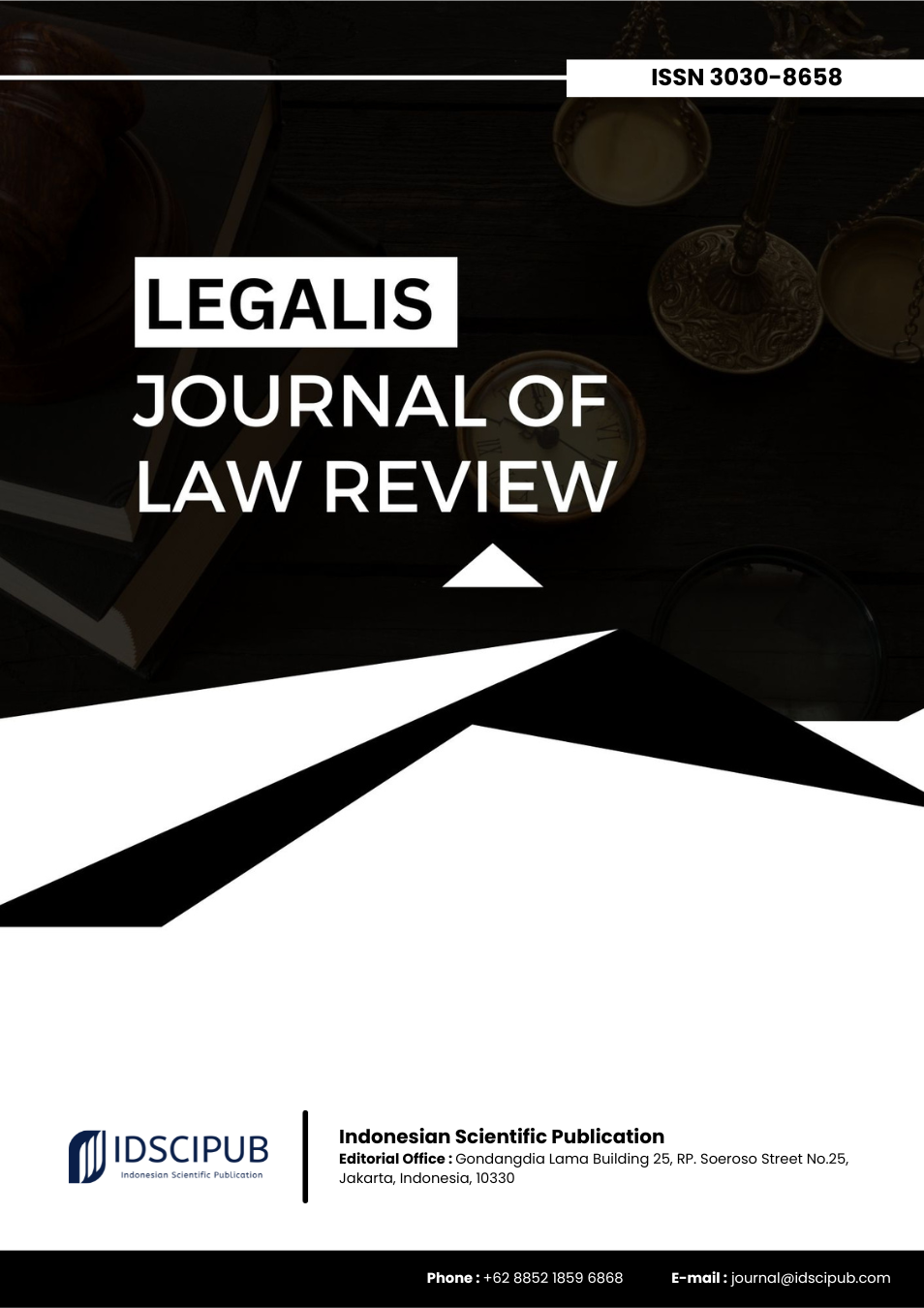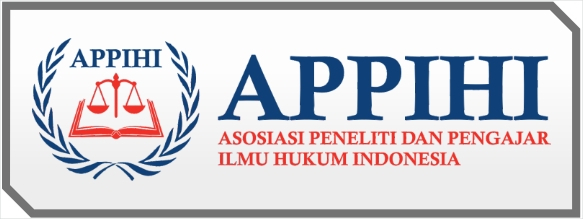Designing Justice: The Influence of Constitutional Review Mechanisms on Minority Rights Protection in Democracies
DOI:
https://doi.org/10.61978/legalis.v3i3.1123Keywords:
Constitutional Review, Minority Rights, Judicial Institutions, Abstract Review, Democratic Governance, Comparative Constitutional Law, V-DemAbstract
This study examines the empirical relationship between constitutional review models and the protection of minority rights in democratic states. While international human rights instruments set normative standards, domestic institutional designs determine how these norms are implemented and enforced. The research evaluates whether countries with stronger constitutional review systems—particularly those featuring centralized courts, abstract review powers, and individual constitutional complaint mechanisms—are more effective in protecting minority rights. Using a cross-national panel dataset covering 2000–2024, the analysis integrates data from the Comparative Constitutions Project, World Justice Project, V-Dem, and Minority Rights Group. Key dependent variables include the WJP Fundamental Rights Index and V-Dem’s Equality before the Law and Liberty Index. Independent variables capture review typologies and structural features, while controls address regime type, economic development, and minority risk context. Analytical methods—OLS, GLS, event studies, and propensity score matching—are employed to test causal robustness. Results show that centralized constitutional review and individual access mechanisms significantly correlate with higher levels of minority rights protection. Event-study analyses demonstrate post-reform improvements in rights indices, and matched comparisons confirm positive treatment effects. These findings underscore how institutional design influences human rights enforcement. The study contributes to comparative constitutional law and political science by empirically linking judicial structure to rights outcomes. It concludes that robust constitutional review mechanisms, supported by democratic governance and institutional integrity, are critical to translating normative commitments into tangible protections for minority groups.
References
Ahmad, M. S., Alruwaili, A., Alruwaili, K. H. A., Alanazi, A. K. M., Alarjan, L. M. M., Alanazi, A. M. M., Aljunaydi, N. A., Alkhaldi, A. M. M., Alabdali, M. F. H., & Alrashedi, F. F. A. (2024). Evaluation of Child Preference for Dentist Attire and Usage of a Camouflage Syringe in Reduction of Anxiety. Journal of Pharmacy and Bioallied Sciences, 16(Suppl 1), S757–S760. https://doi.org/10.4103/jpbs.jpbs_997_23 DOI: https://doi.org/10.4103/jpbs.jpbs_997_23
Batsaikhan, B., & Park, G.-C. (2022). Problems and Improvements of Mongolia’s Governmental Structure- Focusing on the Checks and Balances Between the Parliament, the President and the Cabinet. Korean Assoc Int Assoc Const Law, 28(2), 95–126. https://doi.org/10.24324/kiacl.2022.28.2.95 DOI: https://doi.org/10.24324/KIACL.2022.28.2.95
Carrington, N. T., & Strother, L. (2023). Plugging the Pipe? Evaluating the (Null) Effects of Leaks on Supreme Court Legitimacy. Journal of Empirical Legal Studies, 20(3), 669–712. https://doi.org/10.1111/jels.12362 DOI: https://doi.org/10.1111/jels.12362
Chalid, H. (2017). Dualism of Judicial Review in Indonesia: Problems and Solutions. Indonesia Law Review, 7(3). https://doi.org/10.15742/ilrev.v7n3.353 DOI: https://doi.org/10.15742/ilrev.v7n3.353
Conrad, C. R., Hill, D. W., & Moore, W. H. (2017). Torture and the Limits of Democratic Institutions. Journal of Peace Research, 55(1), 3–17. https://doi.org/10.1177/0022343317711240 DOI: https://doi.org/10.1177/0022343317711240
Gani, I. A., Asmara, R., Sulaiman, S., & Husna, A. (2024). The Constitutional Court’s Protection and Fulfilment of the Citizens’ Rights: Constitutional and Islamic Law Perspectives. Samarah Jurnal Hukum Keluarga Dan Hukum Islam, 8(1), 317. https://doi.org/10.22373/sjhk.v8i1.22215 DOI: https://doi.org/10.22373/sjhk.v8i1.22215
Haglund, J. (2019). International Institutional Design and Human Rights: The Case of the Inter-American Human Rights System. Conflict Management and Peace Science, 36(6), 608–625. https://doi.org/10.1177/0738894219881427 DOI: https://doi.org/10.1177/0738894219881427
Hanara, D. (2018). Mainstreaming Human Rights in the Asian Judiciary. Constitutional Review, 4(1), 77. https://doi.org/10.31078/consrev414 DOI: https://doi.org/10.31078/consrev414
Hasani, I., Halili, H., & Balakrishnan, V. (2022). Undelivered Constitutional Justice? Study on How the Decisions of the Constitutional Court of the Republic of Indonesia Are Executed. Jurnal Civics Media Kajian Kewarganegaraan, 19(1), 45–52. https://doi.org/10.21831/jc.v19i1.48378 DOI: https://doi.org/10.21831/jc.v19i1.48378
Ismayilov, R. R. o. (2024). Writ of Certiorari as a Means of Ensuring Centralization of Diffuse Constitutional Review. Russian Justice, 1, 28–35. https://doi.org/10.37399/issn2072-909x.2025.1.28-35 DOI: https://doi.org/10.37399/issn2072-909X.2025.1.28-35
Kim, D., & Nolette, P. (2023). The Institutional Foundations of the Uneven Global Spread of Constitutional Courts. Perspectives on Politics, 22(1), 294–311. https://doi.org/10.1017/s1537592723002025 DOI: https://doi.org/10.1017/S1537592723002025
Leeuwen, L. v., Verbrugge, R., Verheij, B., & Renooij, S. (2024). Building a Stronger Case: Combining Evidence and Law in Scenario-Based Bayesian Networks. https://doi.org/10.3233/faia240202 DOI: https://doi.org/10.3233/FAIA240202
Levchenko, O., Levchenko, A. V., Kolisnichenko, R., Tsumariev, M., & Zaverbnyj, A. (2023). Formation of a Model of Legal Protection of Competitive Advantages in the System of Innovation Management of Sustainable Development and Planning. International Journal of Sustainable Development and Planning, 18(4), 1227–1233. https://doi.org/10.18280/ijsdp.180427 DOI: https://doi.org/10.18280/ijsdp.180427
Li, T., Hidayah, N. N., Lyu, O., & Lowe, A. (2022). Navigational Space for the Absence of Sustainability Assurance in China. Accounting Auditing & Accountability Journal, 36(5), 1221–1248. https://doi.org/10.1108/aaaj-04-2020-4514 DOI: https://doi.org/10.1108/AAAJ-04-2020-4514
Lu, J., Sun, D., Yu, J., Li, J., & Niu, F. (2020). “Local Versus Nonlocal” Enterprise Linkages of Global Cities: A Comparison Between Beijing and Shanghai, China. Complexity, 2020, 1–13. https://doi.org/10.1155/2020/8918534 DOI: https://doi.org/10.1155/2020/8918534
Mark, A., & Zilis, M. A. (2017). Restraining the Court: Assessing Accounts of Congressional Attempts to Limit Supreme Court Authority. Legislative Studies Quarterly, 43(1), 141–169. https://doi.org/10.1111/lsq.12187 DOI: https://doi.org/10.1111/lsq.12187
Prasetyorini, S. A., Lisdiyono, E., & Mulyani, S. (2024). Reimagining Legal Aid Institution Regulations to Enhance Legal Clarity. Journal of Law and Sustainable Development, 12(5), e03418. https://doi.org/10.55908/sdgs.v12i5.3418 DOI: https://doi.org/10.55908/sdgs.v12i5.3418
Sinani, B. (2024). Global Patterns of Constitutional Judicial Review Systems: Two Major Models of Constitutional Judicial Review in the World. Juridical Tribune - RCIL, 14(1), 156–173. https://doi.org/10.62768/tbj/2024/14/1/10 DOI: https://doi.org/10.62768/TBJ/2024/14/1/10
Solehudin, E., Fautanu, I., & Rizal, L. F. (2024). The Value of Community Participation in the Creation of Local Legal Products in Indonesia. Hanifiya Jurnal Studi Agama-Agama, 7(1), 99–114. https://doi.org/10.15575/hanifiya.v7i1.34483 DOI: https://doi.org/10.15575/hanifiya.v7i1.34483
Teixeira, F., Ferreira, J. J., & Veiga, P. M. (2021). Does Law as Resource Bring a Competitive Advantage to Companies? Management Research the Journal of the Iberoamerican Academy of Management, 20(3), 193–211. https://doi.org/10.1108/mrjiam-07-2021-1204 DOI: https://doi.org/10.1108/MRJIAM-07-2021-1204
Yıldız, E. (2023). Between Forbearance and Audacity. https://doi.org/10.1017/9781009103862 DOI: https://doi.org/10.1017/9781009103862







